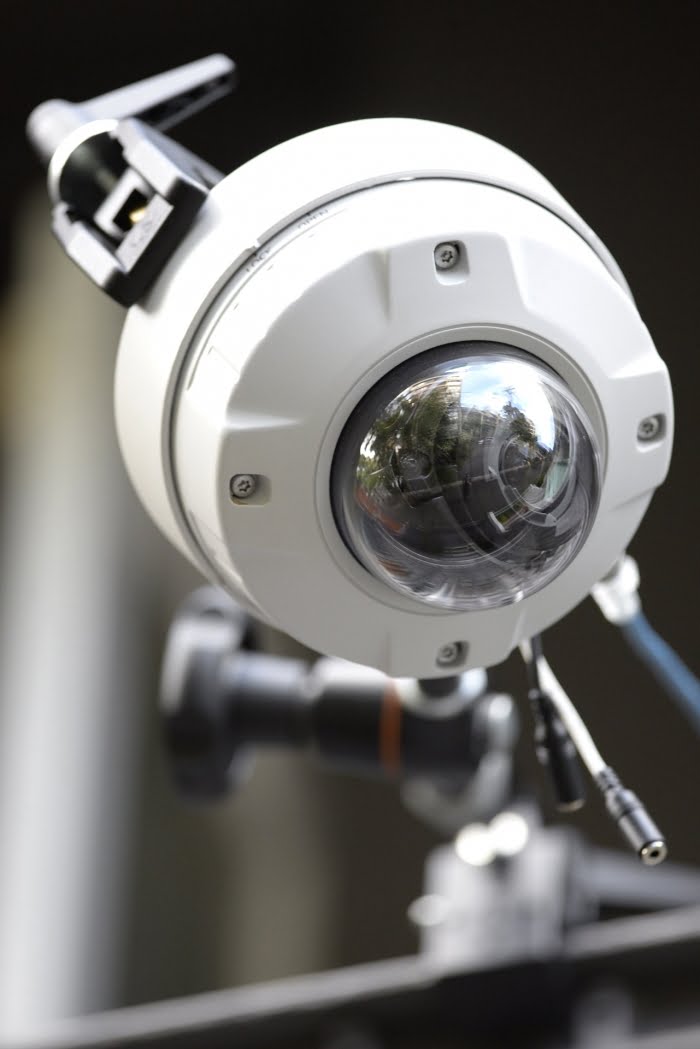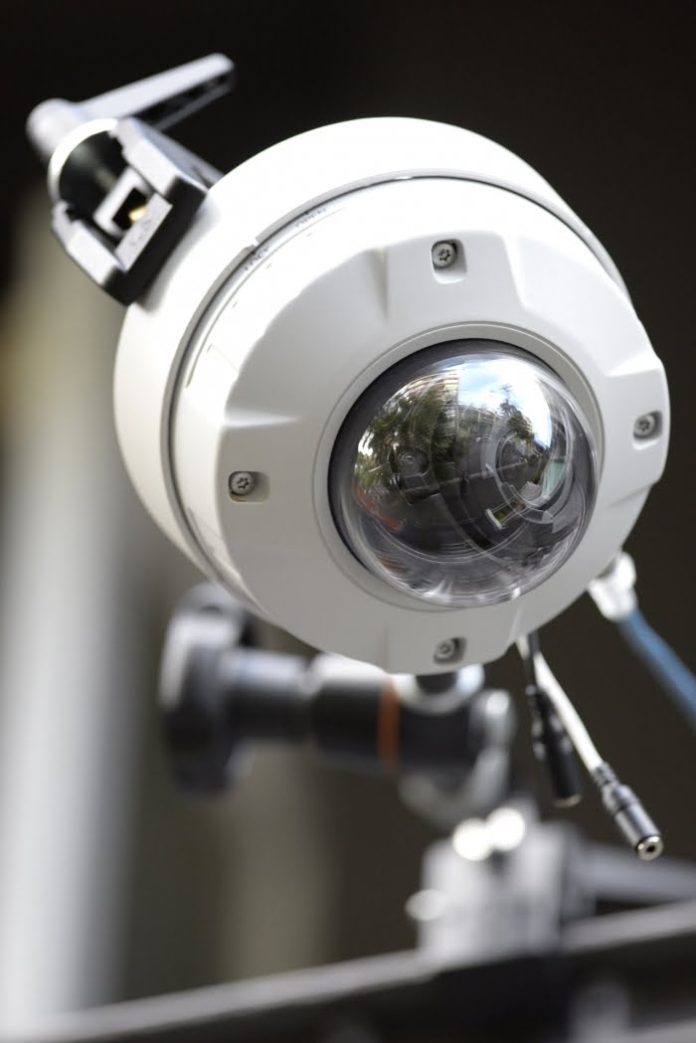Panasonic WV-S2531L Dome from BGWT is an IP66-rated day/night dome with a cast alloy housing and base, 1080p at 30ips and 720p at 60ips, H.264 compression, strong 133dB WDR performance, minimum scene illumination of 0.04 lux in colour and 0.01 in monochrome at F1.3 and 0 lux with IR activated.
PANASONIC’S WV-S2531L is a solid camera, it’s well built and has an excellent overall specification. Compared to many modern lightweights, the S2531L feels like the real deal with an IP66, NEMA 4X and IK10-rated cast allow housing. You put the camera and base together during setup and that provides ample time to appreciate the thought that has gone into this unit, with its ample cable port, Clearsight and Rainwash Coating. The quality of the build goes under the hood – this camera is well and truly buttoned up – it’s very much old-school Panasonic.

The optical specification is strong, too. The MOS sensor delivers 1080p resolution and the processor dishes up 60ips. The motorised F1.3 aperture lens has an optical range of 2.8-10mm – giving 3.6x optical zoom with digital zoom offering up to 10.8x – and offers a very flexible horizontal angle of view from 28.8-102.6 degrees with a maximum of 56 degrees vertical.
The camera combines Super Dynamic and Adaptive Black Stretch to offer 133dB of WDR and there’s multi-process NR and 3D-DNR to handle noise. Low light performance is strong – it’s 0.04 in colour, 0.01 in monochrome and there’s integrated IR to give imagery in no lux at all. Importantly, the IR is intelligent and adjusts its output depending on how close a subject is to the lens to avoid IR flare.

The camera has a pan range of 180 degrees, a tilt range of 85 degrees, auto back focus, an aperture control lens to ensure optimum focus in challenging conditions, Face Super Dynamic Range technology ensures clear face image. There’s built-in alarm function and VMD, to which can be added new intelligent extension software, along with fog compensation, Super Chroma compensation function to enhance colour in low light. There’s smart coding and the camera supports SSL and DDNS.
When it comes to physical specifications, the WV-S2531L features a new 4-direction camera attachment bracket, double SDXC/SDHC/SD Memory card slots for manual recording (H.264/JPEG), alarm recording (H.264/JPEG) and backup upon network failure (H.264/JPEG). The dome cover is designed to give views above the horizontal to expand the camera’s range of tilt. There’s a vandal-resistant mechanism, IR LED, 2-way audio (but no built-in microphone), 3 inputs and 2 outputs, operating temperature range of -45 to 50C and PoE or 12V DC power source,
Test Driving the WV-S2531L Dome
We’re testing this Panasonic dome on the Dell Optiplex 9020 server, with i7 processor via a Netgear S1080P PoE switch. As usual there are no other cameras on the network for this test. Setup is very easy. I’ve downloaded the EziIPSetup and the camera is found, I set my obligatory username and password and that’s all there is to accessing all the functionality of the camera browser. I have the camera’s cast alloy base fitted and the entirety is held by a super clamp to a Manfrotto Magic Arm. As usual with domes, I have the camera tilted backwards to give me elevation of the horizon for deep street views.

From the get-go, this camera impresses with a stable image stream that is low on noise and blur. There’s some latency – enough so I can look at the camera when setup beside me then swing around to the monitor and see myself looking at the camera – that’s about 400ths of a second. Given resolution is 1080p, this suggests the camera is doing some additional processing of the image stream.
The wide standard angle of view has mild barrel distortion, there are subtle chromatic aberrations wide open but almost none are to be seen when zoom stops the lens down. The camera’s widest angle of view is ideal for our front street scene. I notice the Panasonic handles variable light very well and shows no sign of over-exposing up the street, which regular readers will know is an uncommon capability.


Something else it’s inevitable I’m pleased with, is the motorised zoom and focus, which allows me to dig 3.6x into the scene. Optical zoom on a fixed dome like this one needs to be handled thoughtfully, given you can quickly find yourself zooming outside of contextual awareness. This said, you can also zoom yourself into iron-clad court admissible evidence – it’s something to be considered on the basis of application.
Getting plates is possible at the widest angle of view within about 15 metres of the lens. Beyond 15 metres pixel spread makes this hit-miss and it’s only when you wind in a little – 1.5x optical zoom is enough – that you begin to guarantee moving plates in good light at 15-20m and further, horizon permitting. Snaring face recognition of pedestrians is easy to do and as backlight fills in on the street below, I trundle Norman out to see how the camera manages depth of field in challenging light. Conditions are a bit tough, with deep shade under the towers but the WV-S2531L handles it well.

Performance is strong at wide angle and it improves on zoom, when it comes to face recognition and plates. Norman’s face pops at 8 metres with great colour rendition and sharpness. I spend a bit of time at the long end reeling in that rather large digital zoom.


There are times digital zoom (pictured above) might help but only because it’s easier to access – you can simply mouse-wheel zoom and click-pan around the scene once you’ve zoomed digitally. Same as all digital zoom, there’s a quality trade-off at 1080p that you don’t get with the 3.6x optical zoom, which as you can see in the close-up of Norman above, is flawless. Digital zoom serves to eliminate distraction, not provide further information by way of more magnification.


The camera is strong all afternoon – it keeps handling the light variations without drama, proffering the user excellent depth of field – and that ability to deliver consistent performance across the frame is still there at 630pm. I’m getting even tone, strong acuity, low noise. However, just after 6pm I get my last moving plate at full wide. As the evening wears on, there are typical signs of a slowing shutter speed – it can’t be tone mapping, given we did not see signs of this earlier – there may be additional processing taking place that’s having an impact, too. While there are no plates, there’s no tearing of fast moving objects in the image at this point – they retain sharply defined edges and faces of pedestrians are excellent quality, too. The image remains oddly bright as light falls and amplification spools up. There’s a little more noise but things are tight.
At 735pm the image on the monitor is well and truly divorced from reality. It’s still bright and consistent from front to back and the depth of field is huge – I can see cars heading up Albion St 100m away. By now it’s 6.2EV (190 lux) out front and cars have their headlights on. Frankly, that 190 lux reading doesn’t sound right to me – it seems positively gloomy outside. I know from experience that the next half hour will be crucial in terms of assessing the WV-S2531L dome’s performance. Just after 8pm we should go sub 4 lux out front.


At 7.52 it’s 4.3 EV – 50 lux – and moving faces are starting to blur a little. The overall image stays tight – the scene is rendered consistently. At around 8pm in fast falling light, the image starts to exhibit some additional noise – there’s a little dragging of tail lights now but the image remains bright and even – no sign of monochrome yet. At 8.04pm it’s 10 lux and the image is still colour with a tendency towards warmer tones. Noise remains very well controlled, but the slow shutter speed is blurring the traffic now.
I hop into setup to see if my settings can be tweaked but my original choices seem good to me – I leave them alone – but I take the opportunity to centre the distortion slider, which dials all the barrel distortion out of what is a very wide scene. Nice. By 815pm we are at 0.1 EV out front – that’s around 3-3.5 lux – and it won’t get much darker out here. I’m going to have to push the Panasonic into night mode. Once into monochrome, I’m pleasantly surprised to find the camera is undertaking a re-focus all by itself. This doesn’t always happen after the cut filter goes over and it can be a serious issue. Nicely done, Pana.


If I want to see IR performance, the camera is going to have to go out into the lane and/or back into the office. I start with the lane and as soon as I hoist the Panasonic over the back fence, I’m impressed. There’s a little noise but generally speaking, this is a great image in a much darker scene than typical city street. I start with the IR array off and turn it on – IR coverage is good – the specifications don’t talk about IR range, but the spread is broad. Light in the back lane is sub 2 lux at the lens, so this is pleasing work from the camera. Some people walk across the end of the lane and there’s motion blur – shutter speed again.



To get a greater sense of performance out here, I trundle Norman around the block and sit him in the middle of the lane about 6m from the lens. Face recognition is excellent with a static target. What about a moving target? I wait half an hour for some one to traverse the lane but it’s a very quiet Sunday night – time for Ronnie Rotakin, I decide. Once Ronnie is set up in the middle of the lane I head in to check the image – there’s about 45 degrees of blur – not too much but enough to soften faces – I can still recognise Ronnie but his monochromatic features are decidedly unsubtle.
Conclusions
Panasonic’s WV-S2531L external dome is an excellent camera that’s built to handle challenging environments. It’s easy to set up and offers strong performance in a range of situations. Strengths include overall image quality, control of noise, the consistency of image streams in variable light, as well as the ability to manage backlight. The 3.6x optical zoom has few vices and allows the camera to reach deep into a scene when required. While the angle of view narrows as you zoom, if the camera is thoughtfully installed to make the most of zoom points in a scene there’s a lot to be gained from this capability.

Making zoom easier is auto focus, which is fast and concise – the only time the Pana missed focus was at full zoom with Norman’s target area filling half the screen and the footpath filling the other half. The camera compromised mid-way, which from an operational perspective might be exactly what you would want. IR performance is modest – a broad spread that covers the area under and in front of the lens – it seemed effective to about 10m in the lane. From the point of view of build quality, this is a nicely made camera – robust and easy to work with.
By John Adams
Features of the Panasonic WV-S2531L include:
* 1080p Full HD/720p HD images up to 60 fps
* Enhanced Super Dynamic and ABS deliver 133 dB WDR
* Multi process NR & 3D-DNR noise reduction
* Day & Night: 0.04 lx (colour), 0.01 lx (B/W) at F1.3
* Intelligent IR LED equipped for 0 lx with no flare.








